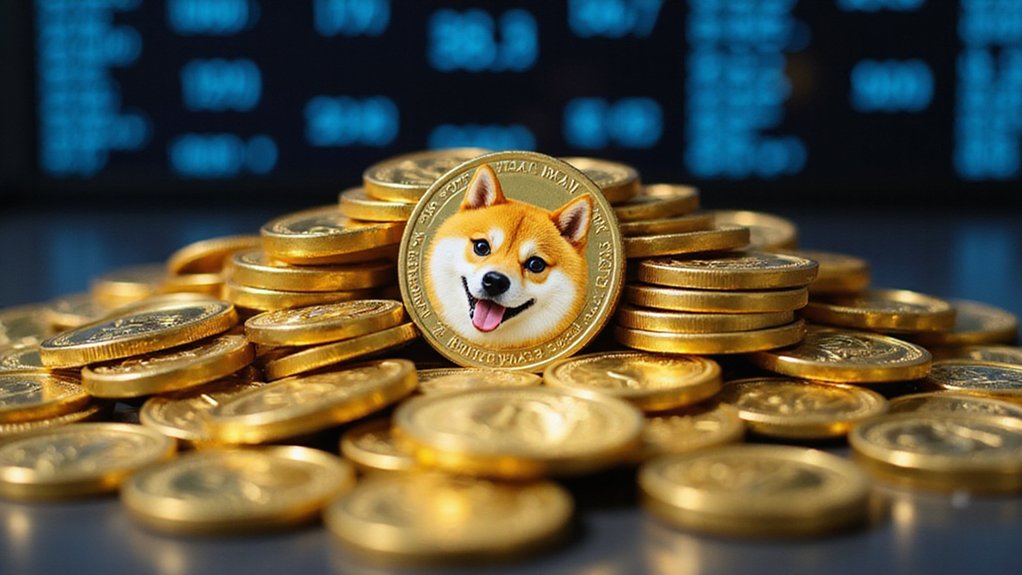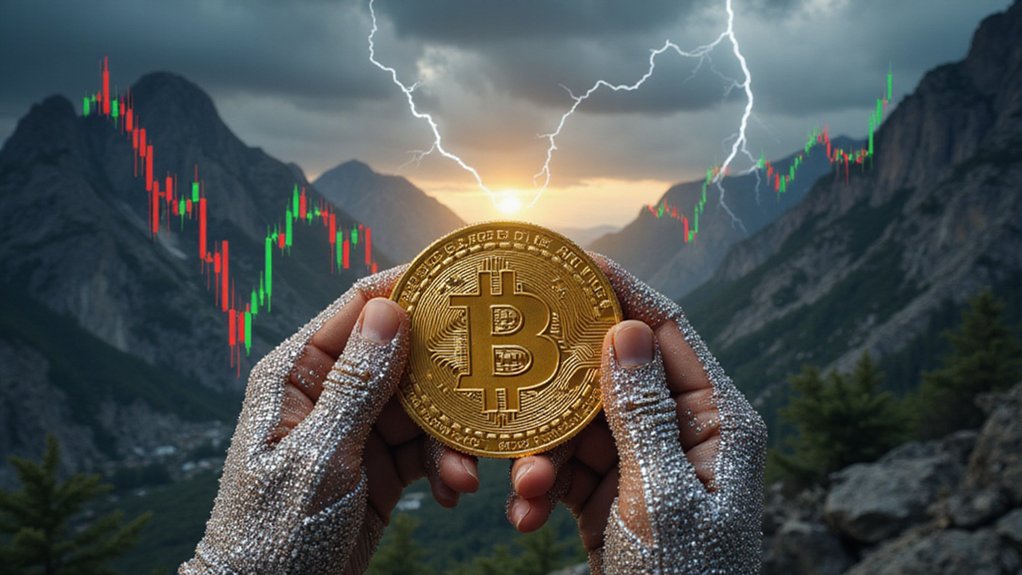As of today, approximately 150 billion Dogecoins circulate in the market, with a precise count of 148,919,706,383 DOGE. Unlike Bitcoin’s capped supply, Dogecoin operates on an inflationary model, adding roughly 5 billion new coins annually. This perpetual expansion—originally unintended by creators Markus and Palmer—hasn’t prevented DOGE from maintaining a $23 billion market capitalization. The paradoxical success of this infinitely inflating “joke currency” challenges conventional economic wisdom about scarcity-driven value.

When discussing the peculiar phenomenon that is Dogecoin—a cryptocurrency that began as a joke yet somehow amassed a multi-billion dollar market capitalization—the question of supply inevitably surfaces. Unlike Bitcoin’s famously limited supply of 21 million coins, Dogecoin operates with a substantially different economic model. Currently, approximately 148.9 to 150 billion DOGE circulate in the market, with this figure steadily increasing by design.
Dogecoin’s creators initially established a cap of 100 billion coins, seemingly an astronomical figure chosen partly in jest. However, this limit was subsequently removed, transforming Dogecoin into an inflationary currency that mints approximately 5 billion new coins annually. This structure—unorthodox in a space where scarcity often drives value—hasn’t prevented Dogecoin from achieving a remarkable $0.74 all-time high, though its current price hovers around a more modest $0.16. Recent price movements show DOGE trading between market values of $0.17 to $0.20526 as market sentiment fluctuates.
Dogecoin’s infinite supply—once capped at 100 billion—adds 5 billion coins yearly, yet has sustained value despite defying crypto’s scarcity doctrine.
The blockchain architecture underpinning this canine-themed cryptocurrency facilitates faster transactions than its predecessors, with blocks processed every minute (compared to Bitcoin’s lethargic 10-minute intervals). Using the Scrypt mining algorithm inherited from its Litecoin ancestry, Dogecoin maintains security through dynamic difficulty adjustments while enabling this accelerated transaction verification. The technology was created by software engineers Billy Markus and Jackson Palmer who launched it as a joke in December 2013.
Despite its seemingly unlimited supply—a characteristic that economists might reflexively denounce as inflationary folly—Dogecoin maintains a substantial market capitalization between $23.3 and $23.7 billion, positioning it consistently among the top ten cryptocurrencies. Daily trading volumes fluctuate dramatically, reaching up to $1.98 billion during periods of heightened interest, often catalyzed by social media activity rather than fundamental economic developments. The current circulating supply stands at precisely 148,919,706,383.705 DOGE, according to the latest market statistics.
The economic implications of Dogecoin’s inflationary design present an intriguing paradox. While traditional monetary theory suggests that continuous supply expansion should diminish value, Dogecoin has repeatedly defied conventional wisdom, maintaining significant market presence despite its perpetually increasing supply. This contradiction underscores the complex interplay between technological utility, community sentiment, and speculative dynamics that characterize cryptocurrency markets—where traditional economic principles often apply only tangentially, if at all.
Frequently Asked Questions
What Gives Dogecoin Its Value?
Dogecoin’s value stems from a peculiar cocktail of factors: market demand driven by its vibrant social media community, celebrity endorsements (particularly Musk’s tweets, which send markets into predictable frenzies), growing merchant adoption, and its utility for micropayments.
Unlike Bitcoin’s scarcity narrative, Dogecoin thrives on social psychology rather than robust technological fundamentals—a proof to the fact that, in cryptocurrency markets, perception often trumps intrinsic utility.
Its low transaction fees and processing speed provide some practical underpinning to its otherwise sentiment-driven valuation.
How Do You Mine Dogecoin?
Dogecoin mining entails validating blockchain transactions through the Scrypt algorithm, with three primary approaches (in descending order of efficiency): ASIC miners, GPUs, and the now-obsolete CPU method.
Most miners join pools to combine computational power—a pragmatic choice for consistent returns.
The process requires compatible hardware, specialized software configuration, and connection to both a mining pool and Dogecoin wallet.
Profitability hinges on hardware efficiency, electricity costs, and the perpetually volatile DOGE market value.
Is Dogecoin a Good Investment?
Dogecoin presents a paradoxical investment proposition.
While its $23 billion market cap and robust trading volume suggest legitimacy, its unlimited supply creates inherent inflationary pressure.
The cryptocurrency’s 78% plunge from its $0.73 peak exemplifies its volatility—driven more by celebrity endorsements and social media fervor than fundamental utility.
Risk-tolerant investors might allocate a small portfolio percentage to Dogecoin, but prudent investors should recognize it remains primarily speculative, fueled by sentiment rather than intrinsic value.
Who Created Dogecoin and Why?
Dogecoin emerged from the collaborative efforts of Billy Markus, an IBM software engineer from Portland, and Jackson Palmer, an Adobe engineer based in Sydney, who launched it on December 6, 2013.
Their creation was fundamentally a satirical response to Bitcoin’s growing controversies, deliberately designed as a more approachable cryptocurrency featuring the viral Shiba Inu “Doge” meme.
This lighthearted approach aimed to democratize crypto access through humor—a strategy that, somewhat ironically, generated genuine adoption and staying power.
Where Can I Buy and Store Dogecoin Safely?
Dogecoin can be purchased on major exchanges like Coinbase, Binance, and Kraken—platforms that, despite occasional security mishaps, remain the primary on-ramps for most investors.
For storage, prudent holders opt for hardware wallets (Ledger, Trezor) rather than leaving assets on exchanges (a perennial risk that somehow requires repeating).
Software alternatives like Exodus provide decent security with greater convenience, though they demand vigilance with two-factor authentication and regular software updates.









